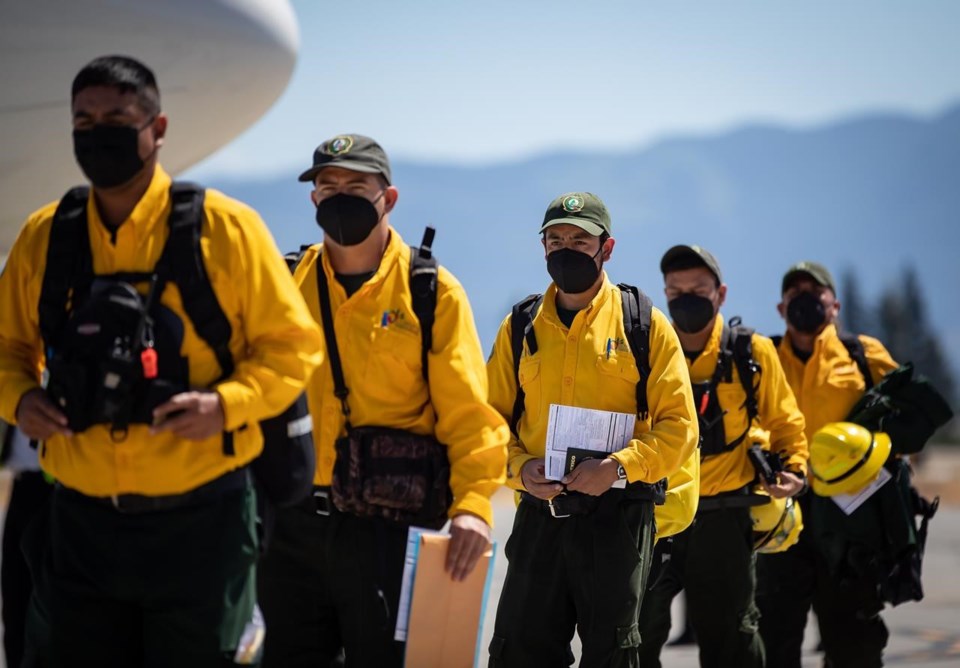British Columbia is "significantly ahead" of the 10-year average in terms of the number of fires and the area that has been scorched so far this year, says the director of fire centre operations at the BC Wildfire Service.
Rob Schweitzer said Tuesday the province has seen 1,230 blazes resulting in 4,250 square kilometres of land burned since April 1 and it's only halfway through the wildfire season. The 10-year average for the same period is about 642 fires and 1,050 square kilometres burned, he told a news conference.
A crew of 34 specialists from Australia is set to bolster the 208 out-of-province personnel working alongside more than 3,000 firefighters and others on B.C.'s fire lines, he said.
Teams from Alberta, Quebec, Mexico, and members of the Canadian Armed Forces are already deployed on some of the more than three dozen blazes that the wildfire service says are either highly visible or immediately threatening properties.
One of those is a 120-square kilometre fire west of Kamloops that flared overnight, forcing the closure of Highway 97C between Ashcroft and the Highland Valley copper mine. The road has since reopened, but the wildfire service warned that increased fire activity means the route could close again with little or no notice.
Schweitzer said there were several reports of people on the weekend who did not heed evacuation orders, which meant precious resources were diverted to help those trapped behind fire lines.
"Most people in B.C. have never experienced an active wildfire event, and the conditions that we're seeing this year, are some of the most extreme that have ever been experienced in this province," he said.
"Those situations can be disorienting and confusing, and your ability to keep yourself, your family safe may be severely impacted."
Evacuation orders were in effect for just over 3,700 properties across the province, while alerts covered about 18,000 more, meaning people had been told to be ready to leave their homes on short notice, the government said on Tuesday.
The most recent evacuation order includes 41 properties in the Lazy Lake area due to increased fire behaviour on the Bill Nye Mountain Fire.
Schweitzer said officials were paying close attention to the forecast and instability in the atmosphere that creates lightning.
The forecast shows a "mixed bag" with temperatures reaching almost 40 C in the south Okanagan, but the blessing is that winds are not going to be extreme, he said.
"The wind is actually our biggest enemy in this case, even though we do not welcome the hot temperatures and low humidities, it's the wind that we're really concerned about," he said.
"We will see those higher temperatures so burning will increase, but we're hoping not to any significant amount."
This report by The Canadian Press was first published July 27, 2021.
Hina Alam, The Canadian Press



